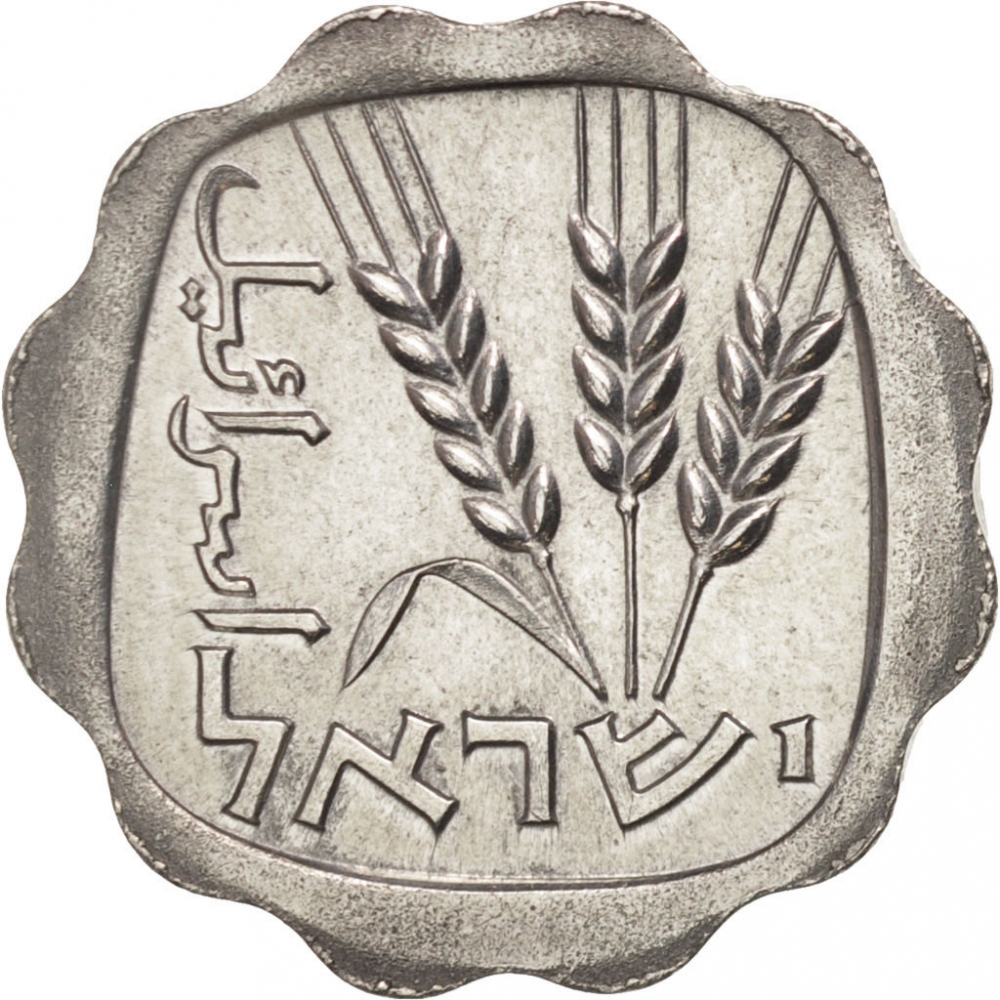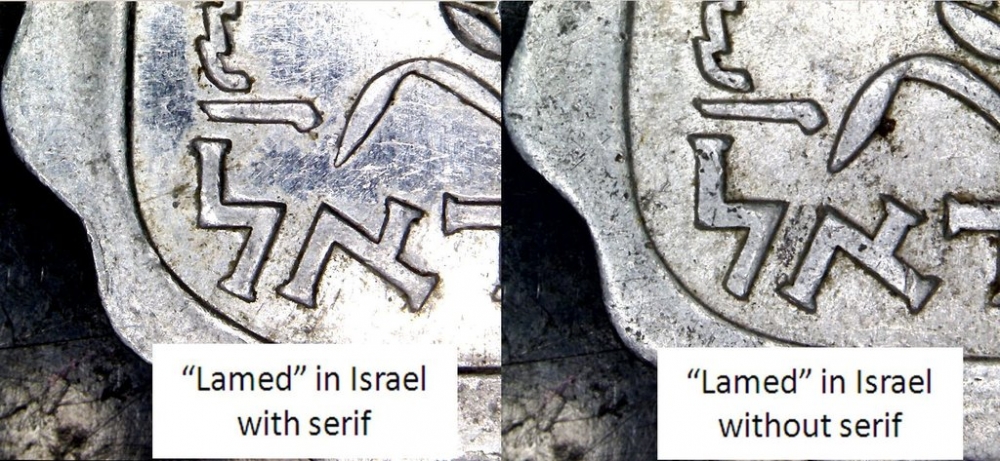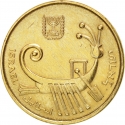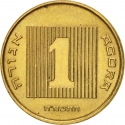You are about to finish your registration. Please check your mailbox (including spam folder). There should be a letter with a confirmation link. Check setting to make sure that your e-mail address is correct.
Send letter againDescription
The agora (Hebrew: אגורה, pl. אגורות, agorot) is a denomination of the currency of Israel. This name was used for the first time in 1960, when the Israeli government decided to change the subdivision of the Israeli lira (a.k.a. Israeli pound) from 1000 prutot to 100 agorot.[1] The name was suggested by the Academy of the Hebrew Language, and was borrowed from the Hebrew Bible, I Samuel 2:36 ...every one that is left in thine house shall come and crouch to him for a piece of silver... (the term "piece of silver" appears in Hebrew as "agorat kessef").
Date of issue: May 12, 1960
Ceased to be legal tender: February 22, 1980
Obverse

|
Three ears of barley. Name of the country (Israel) in Hebrew (bottom) and Arabic (left). ישראל اسرائيل |
|---|---|
Reverse

|
Depicts denomination and the date in Hebrew. 1 |
| Edge |
Characteristics
| Material | Aluminium |
| Weight | 1.03 g |
| Diameter | 20.2 mm |
| Thickness | 1.55 mm |
| Shape |
|
| Notches | 12 |
| Alignment | Medal |
| Mints |
Bern Mint Imperial Chemical Industries (ICI) Jerusalem Mint Ottawa Mint Tel Aviv Mint
|







